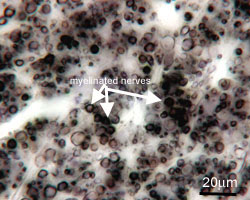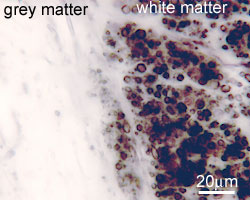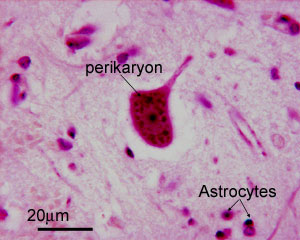
The CNS has a characteristic tissue arrangement called grey matter and white matter.
Grey matter contains the cell bodies (perikarya) of neurons and the supporting cells (neuroglia) as well as unmyelinated dendrites.
White matter does not contain any cell bodies, but mostly contains myelinated nerve fibres.
The central region of the spinal cord is grey matter, and the surrounding region is white matter.
The picture shows a section of spinal cord, stained by a method that colours myelin blue-black. This is a good way of distinguishing white matter from grey but it can be confusing since it stains white matter black!
After you have finished reading this page, take a look at this section from a diseased spinal cord, and try to work out what's wrong.



 Why do you think there so much Nissl substance present in these cells?
Why do you think there so much Nissl substance present in these cells?